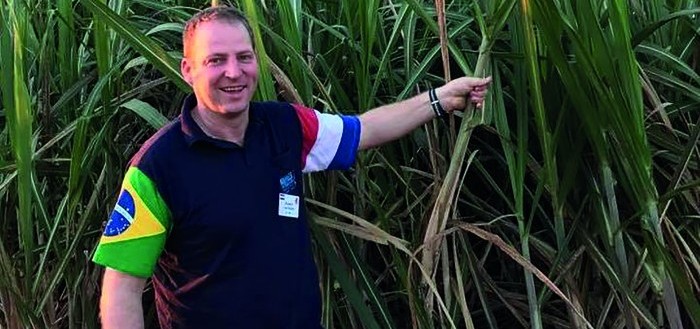Roland van Asten, who runs the Van Asten Group with his brother and sister, producing sows and fatteners at several locations in the region of Thuringia, in Germany, and in the Netherlands, highlights the difficulties facing German pig farmers at the moment
African swine fever (ASF) is having a huge impact on German pig farmers, but it is not even our number one concern at the moment.
Due to COVID-19, we have much less capacity in the slaughterhouses. Germans is currently slaughtering around 100,000 to 200,000 fewer pigs than are ready for market and this is causing a backlog on farms.
Some plants have been closed due to COVID-19 infections among staff –a big Tönnies
plant Rheda-Wiedenbrück closed four months ago and, more recently, another Tönnies plant and a Vion plant had to shut.
Those plants are now open, but slaugterhouses and processing facilities are only running at around one-third capacity due to due to COVID management measures. We are seeing these outbreaks due to the cold climate, the recirculating of air and the intensive nature of the work, where people breathe heavily relatively close to each other. These facilities weren’t built with coronavirus in mind.
And now there is another problem. Because of the spotlight on migrant labour when COVID-19 was affecting a lot plants, a new law will be introduced in Germany in January meaning slaughter plants are no longer allowed to use contractors, so they cannot get people from places like Romania, Bulgaria and Poland. Labour shortages will further affect capacity.
Then, a few weeks ago, ASF was found in wild boar in Brandenburg. It was a shame they didn‘t build the static wild boar fence with Poland, even as ASF showed up right in front of the German border
It means we have lost exports to our biggest market, China, but also other important markets like Japan and Korea, where the bellies went to.
They are working on getting export markets open on a regionalised basis, but I am worried about it because there are no Chinese export inspectors here due to COVID. I don’t see China making the decision without having people on the floor in Germany.
So plants now have to do more work on the carcases to get the meat off and they have parts that they can’t sell at all. Some is going to storage in Germany, but freezer capacity will soon fill up. There is also a lack of freezer in other countries to take the surplus product.
Pig prices have fallen since ASF was confirmed. The slaughter price is now €1.27/kg, compared with €1.47 before ASF and nearly €2/kg at the start of year. The 25kg pig price has fallen to €27, compared with €47 pre-ASF and €80 in March.
The situation on farms is very bad. We came from good times and most of the pig farmers have some fat on their back, but the problems with pigs on farms is getting really worrisome.
The Agriculture Minister of Lower Saxony was crying because she was so sorry that lot of farmers do not know how to deal with the situation, after they told her how desperate it is.
In my business, until, mid-October, the sale of piglets was going well enough and we had no problems getting rid of fatteners.
But now we have a lot of pigs left on the farm. We had 12 trucks for slaughter and they only took four. There are other farms who have had problems for a longer time and it is just getting more difficult and more and more farmers are being affected.
There is no plan B at the moment. The farming union is now helping us to try and find other solution, such as putting straw down where there is space as an emergency solution, but that is not really helping us.
I don’t think the media or the public understand how serious it is. I haven’t seen a newspaper outside of the industry that gets the picture of what is really happening.
Even the German Minister of Agriculture, Julia Klöckner, has said it is irresponsible that we have filled our pig farms to this extent – but 10 months ago when we inseminated the sows, we hadn’t heard of COVID.
Now the Minister is urging farmers to take action and reduce the numbers bred. So does the Government think COVID will still be a problem in 10 months?




